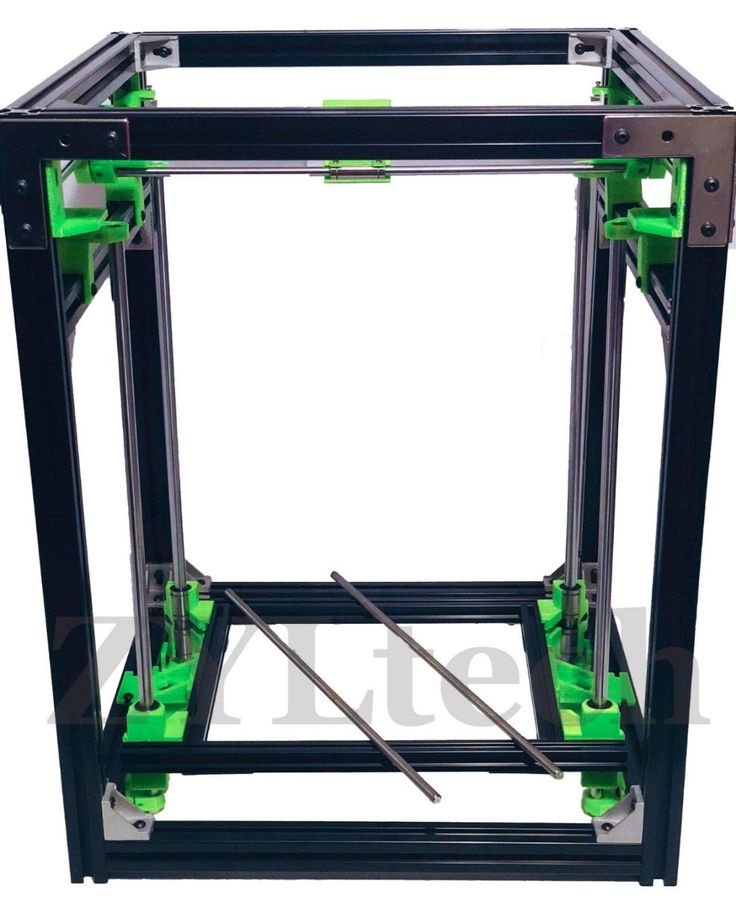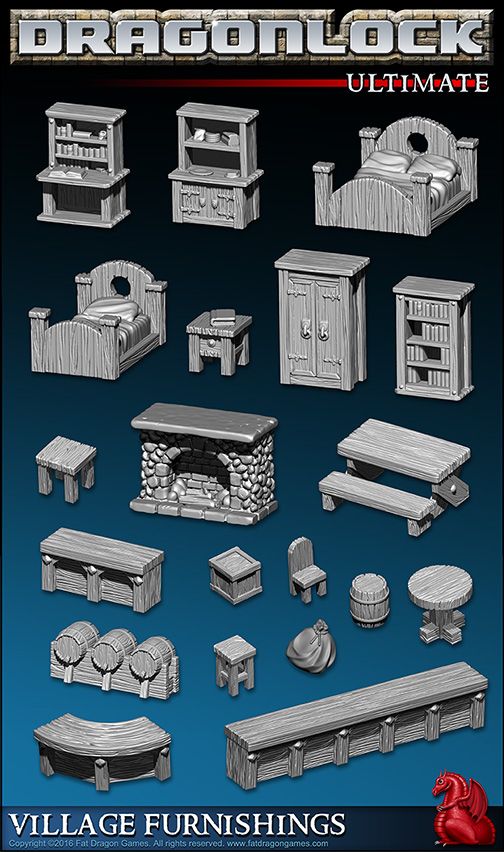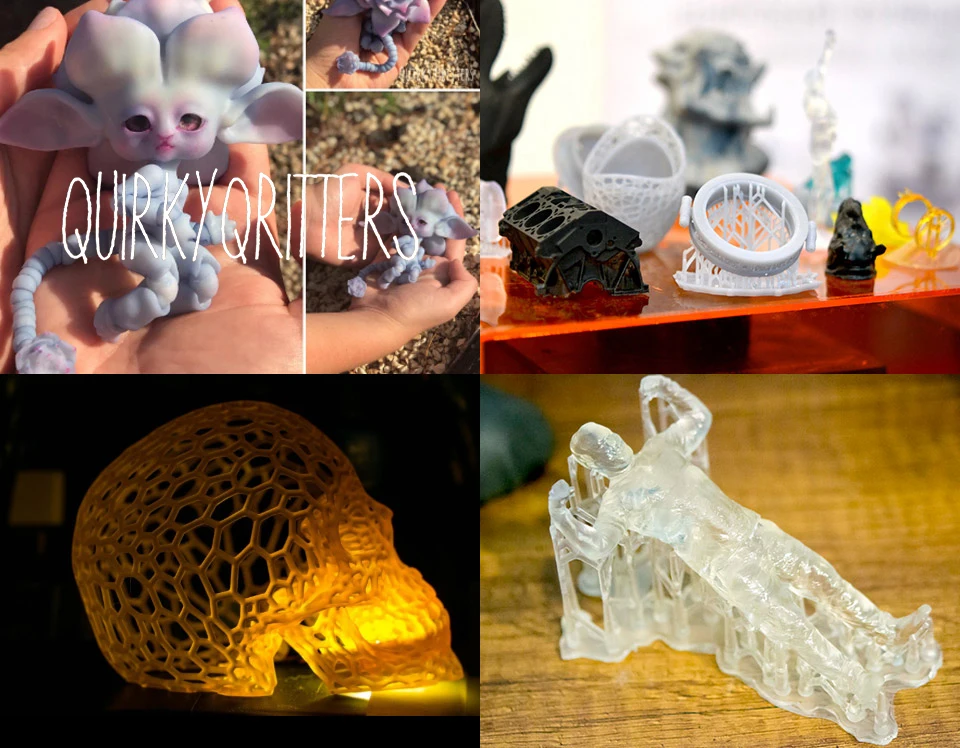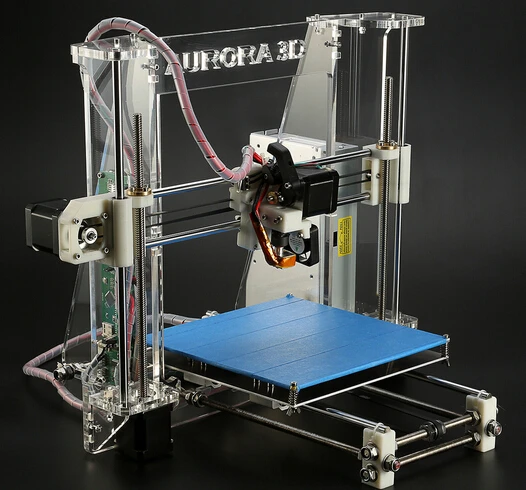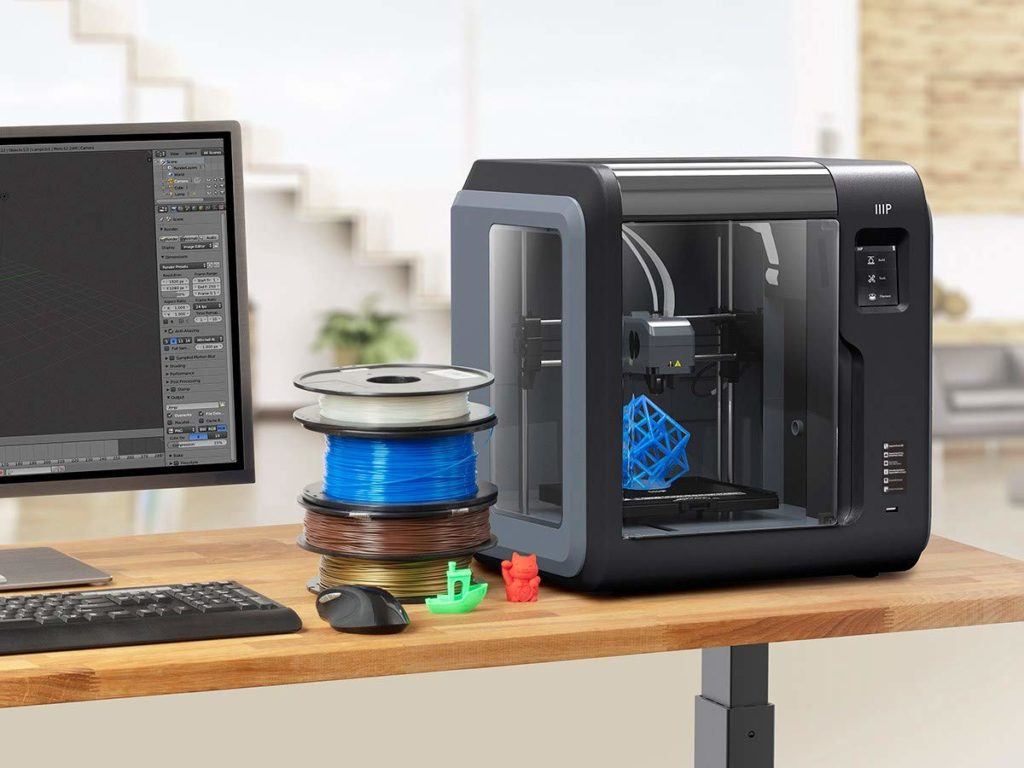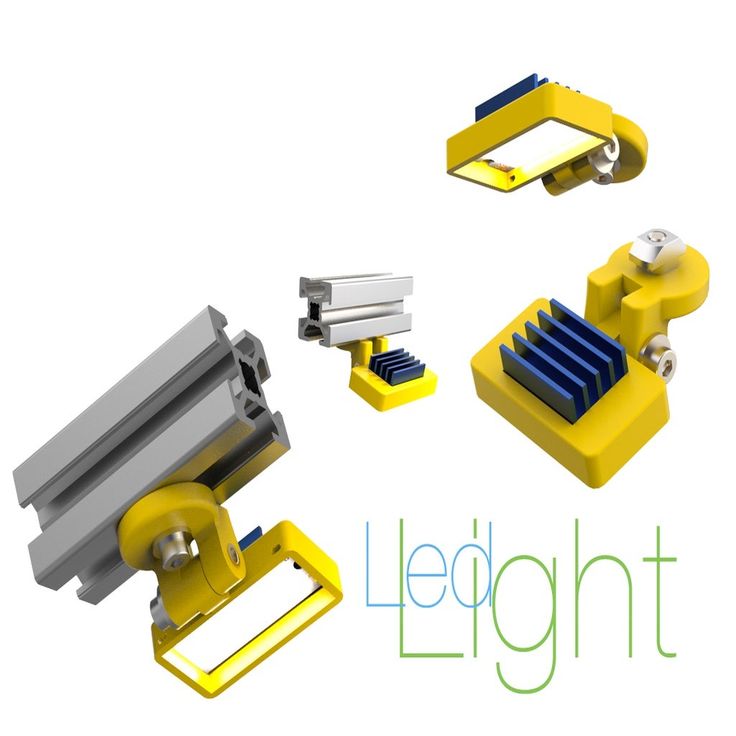A30M 3d printer
Geeetech A30m - guide, settings slicer, review, upgraded
Super New Year Deals!! 40% Discount on all lasers.
Buy now👆
Short specifications
- FDM(Fused Deposition Modeling)
- 320x320x420 printing size
- 60 mm / s
- 1.75mm ABS, PLA, PVA, Petg
- Hotbed 250 ℃
- 1 Nozzle 0.4mm, max 250℃
Category: 3d printers
Additional information
| Type 3d printer | Home |
|---|---|
| Brand | Geeetech |
| Technology | Fused Deposition Modeling (FDM / FFF) |
| Сountry | China |
| Site | https://www.geeetech.com/ |
| Filament diameter | 1.75 |
| Material | ABS, PLA, PVA, Petg |
| Speed | 60 mm / s |
| Nozzle quantity | 1 |
| Nozzle Diameter | 1.75 |
| Nozzle Temperature | 250 |
| Area Size | 320x320x420 |
| Bed | Heated |
| Hotbed Temperature | 110 |
| File Format | STL,G-code |
| Work | USB, Card Reader |
| Addittional | LCD Screen, USB, Card Reader |
Description
Manual
Loading...
Taking too long?
Reload document
| Open in new tab
Download [5.21 MB]
Basic Software
Download simple 3D printer software (slicer):
- Ultimaker Cura
- Repetier-Host
Test models for printing on Geeetech A30m 3D Printer
TOP SALES! The best laser head for your 3D printer / CNC machine / engraving frame.
-
10 Watt (10000 mw) "DeLux"
Buy now!
-
10 watt basic "Invincible" laser
Buy now!
-
10 watt DPSS infrared laser
Buy now!
-
15 watt (15000 mw) DUOS DIY
Buy now!
Calibration check and first print model.
XYZ 20mm Calibration Cube
This is a simple calibration test cube for your 3D printer.
https://www.thingiverse.com/thing:1278865
Cali Cat
Cali Cat is designed to be the purrfect initial calibration and benchmarking print.
https://www.thingiverse.com/thing:1545913
Two towers
Ultrafast and economical stringing test
https://www.thingiverse.com/thing:2219103
Fast full test
https://www.thingiverse.com/thing:2656594
Settings for 3D printing
Basic settings for printing with various filament.
Final printer settings depend on model and filament!
PLA
- Nozzle temperature – 200℃
- Bed temperature – 60℃
- Start speed – 20 mm/s
- Printing speed – 60 mm/s
- Fan – 100%
ABS
- Nozzle temperature – 230℃
- Bed temperature – 100℃
- Start speed – 20 mm/s
- Printing speed – 40 mm/s
- Fan – 0%
- Raft
PETG
- Nozzle temperature – 235℃
- Bed temperature – 70℃
- Start speed – 20 mm/s
- Printing speed – 60 mm/s
- Fan – 80%
Geeetech A30M 3d printer
Simple setup, high uptime, and reliable dual extrusion.
 Push your 3D printing workflow to a whole new level. Optimized for the widest range of materials.
Push your 3D printing workflow to a whole new level. Optimized for the widest range of materials.Check price here!
Technical Specifications:
- Printing Technology: LCD-based SLA Printing, Fused Deposition Modeling(FDM), Fused filament fabrication(FFF)
- Light-source
- Feeder type
- Exposure screen
- XY DPI
- Y axis resolution
- Display
- Layer resolution
- Printing speed
- Rated Power
- Print head
- Printer size
- Printing volume
- Printing material
- Connectivity: USB
- Package Weight
- Build Area
- Printing accuracy
- Light source
- Safety Protected Power Supply
- Print Materials: UV Resin, PLA, ABS, HIPS, PETG, Wood and TPU
- Illuminant: Diffusion, Matrix, None
- Excellent print quality
- Smooth & reliable operation
- Axis Z: Single, Double
- More info
- Easy to assemble.
 Great print quality. Accurate printing results.
Great print quality. Accurate printing results.
Build volume | Printing speed | Printing accuracy | Layer thickness| Operating noise| Nozzle temperature | Heated bed temperature | Machine Dimension | Machine Weight
Compare 3D printers by price, print technology, technical specs, and ratings.
Check price here!
ADVERTISE YOURBUSINESSHEREclick for details
Firmware
# Download the latest firmware update here.
Please check out the information page of your printer before upgrade.
If problem occurred please contact our tech support.
Extract the firmware package to obtain the .bin files.
Copy these .bin files to an empty USB flash drive.
Insert the USB flash drive into the 3d printer.
It will take about a few minutes to upgrade.
Please visit our web site for technical support.
Marlin... RepRapFirmware... Repetier... Smoothie... Klipper... Prusa... MK4duo... MakerBot...
Extremely configurable and flexible, supporting a wide range of machine kinematics, large numbers of axes, tools and ancillaries. This is applicable only to WiFi versions of the firmware. When M569.1 is used to select the encoder type for a closed loop driver on an expansion board, the S parameter is now included for compatibility with version 3.5 expansion board firmware.
grbl... Sprinter... BFB... FiveD... Machinekit... Redeem... Teacup... Yaskawa...
Where to buy Geeetech A30M 3d printer
Get the best deal from the largest online selection. New or used.
Slicer
Windows 10 / Mac OS X / Linux
Debian / Ubuntu / Linux Mint
openSUSE
Oracle Linux, CentOS, RedHat or Fedora
Arch or Manjaro
Show the part of mesh on the ground
Change model interior color
.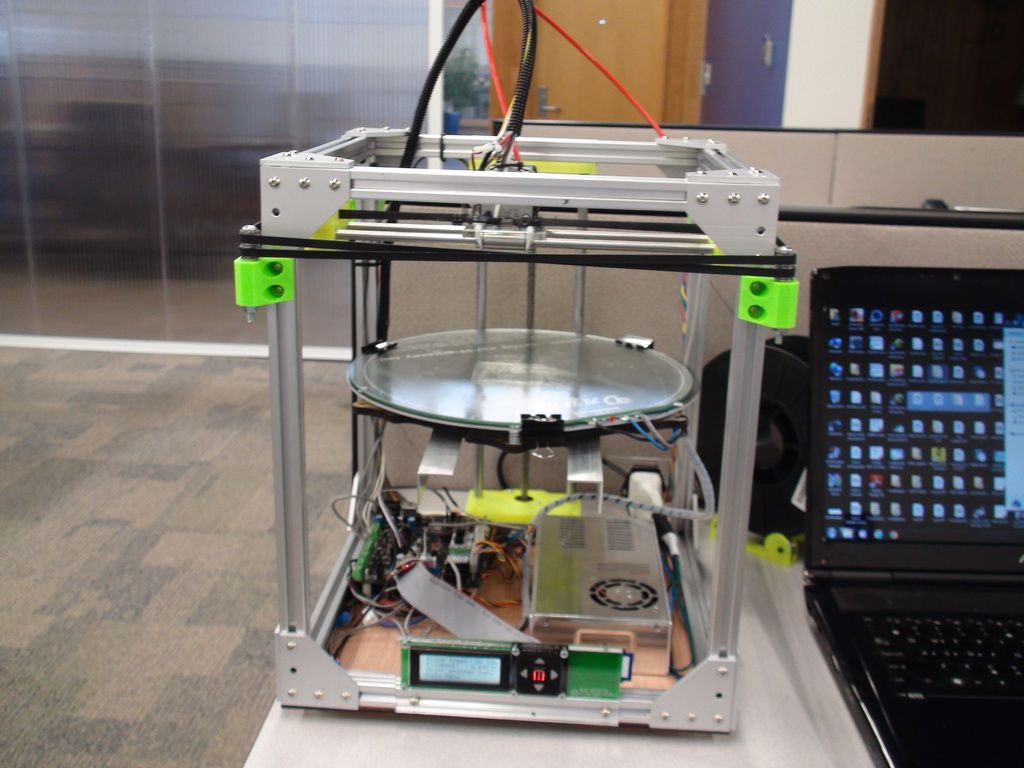 exe
exe
.dmg
.deb
.rpm
.pkg.tar.xz
Slising software installation
Manipulate 3d model in slicer
Model importing
View changing
Model changing
Support Settings
Shape editing
Raft
Slice Settings Geeetech A30M 3d printer
Redesigned UI interface. More convenient to operate.
Download 3D model files to test the latest slicing improvements...
Drivers
# Download the latest drivers for Geeetech A30M 3d printer.
Windows 10, Mac OS, Linux
Recovery guide
# Download the Recovery guide for Geeetech A30M 3d printer here.
Remove all files exceprt for the firmware files from the USB flash drive to avoid crashes.
Safety instruction
Always follow the safety instruction during assembly and usage, to avoid any unnecessary damage to the Geeetech A30M 3d printer or individual injury.
Download the latest Geeetech A30M 3d printer manual pdf here.
Please contact our customer support if you have any issues
In case of emergency, immediately cut off the power of 3d printer and contact the tech support
Geeetech A30M 3d printer includes moving parts that can cause injury
Use protection glasses when cleaning/sanding the printed models
Keep 3d printer and its accessories out of the reach of children
Vapors or fumes may be irritating at operating temperature.
Always use the 3d printer in an open and well ventilated area.
Build Manual
# Download the Build Manual for Geeetech A30M 3d printer here.
Assembly and Leveling instructions
Unpack the machine and then remove the protective film outside
Plug in the power and turn on the power switch
Set the current Z height as the Zero position
Arabic, English, French, German, Greek, Hebrew, Italian, Korean, Punjabi, Spanish, Swedish
Software
# Software for Geeetech A30M 3d printer.
Windows 10 / MacOS / Linux
Compatible with Mac or Windows computers...
Brings more accuracy for leveling
Support anti-aliasing function
Fixed the crash when file fold has incorrect file format
Optimized the stability of reading
Uninstall the previous version before installing
print preparation software
printer management software
Plugin integration: SolidWorkds, Autodesk
Supported file types: STL, OBJ, X3D, 3MF, BMP, GIF, JPG, PNG
Printable formats: G, GCODE, GCODE.gz, UFP
64-bit
Easy to use. Simply choose speed and quality settings, and you can start printing. Prepare your 3D model for print in minutes with recommended settings.
The best way to prepare, manage, monitor, and share your 3D print files.
Parts
# Parts List
Resin
Scraper
Tool set
USB Drive
Gloves
Resin Vat
User manual
Funnel
Power cord
USB cable
Srews
ADVERTISE YOURBUSINESSHEREclick for details
How to use Geeetech A30M 3d printer
Step by step for beginners. Printing more quantity and bigger model at once.
Printing more quantity and bigger model at once.
This tutorial teaches you how to 3D print using the computer.
A quick how to video explaining the steps to use a 3D printer.
Learn how to 3D print your models in this video!
G-Code Commands for 3D Printing
G-code stands for "Geometric Code". Its main function is to instruct a machine head how to move geometrically in 3 dimensions.
There are a few different ways to prepare G-code for Geeetech A30M 3D printer.
G0 - Rapid Move.
G1 - Linear Move.
G90 - Set to Absolute Positioning.
G91 - Set to Relative Positioning.
G-Code Examples...
M106 - Fan on
Geeetech A30M 3d printing resin cost
Standard SLA resins...
Resin or filament...
The price of a DLP 3D printer generally starts around...
Here is the price list...
Best 3D Printing Materials for Geeetech A30M
Buy 3D Printing Resins
Resin 3D printers, whether by laser, LCD or DLP, can produce some of the highest-quality 3D prints.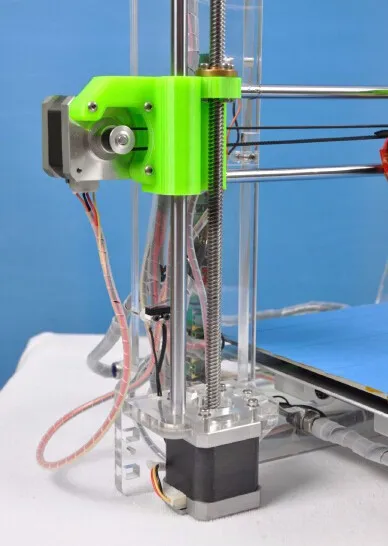 ..
..
Best Budget Resin is...
You can find here the best SLA or DLP 3D printer resin for your 3D printer...
Buy 3D Printing Resins here!
3D Printer Filament PLA... various kinds and colors of filaments, which has even and smooth output, giving you more choices for your creativity.
Suitable for micropavè, engravings, filigree, engagement ring, dental works...
Geeetech A30M 3d printer settings
Maximum volumetric speed
Layer height
Desired resolution
Infill
Infill Patterns
Support material
Brim width
How to connect Geeetech A30M 3D printer to a computer
Connecting via USB...
Installing the driver software...
Microsoft Standard Driver for Geeetech A30M 3D Printer...
Geeetech A30M 3D printer that does not extrude
No filament comes out of the extruder. Extruder problems may have different causes.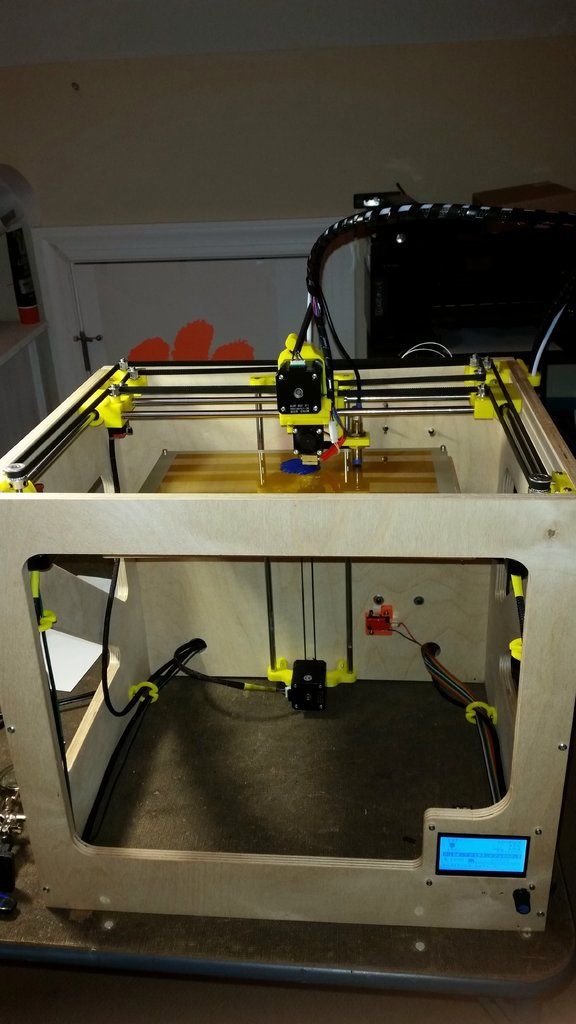 Knowing when the failure occurred is often the first thing you’ll need to consider to properly diagnose the problem.
Knowing when the failure occurred is often the first thing you’ll need to consider to properly diagnose the problem.
- Out of filament
- Initial nozzle height is too close to bed
- Overheated extrusion motor
- Clogged nozzle
- The extruder needs to be primed
- Extrusion Motor is Heated More than Needed
- Filament is Stripped
1980 - 1989
1980
Start of production of the dual-processor complex SM-1410 based on the CM 4P processor and a specialized language processor that ensures compatibility with the Mir series computers (Kyiv; B.N. Naumov , AN Kabalevsky, VP Semik, VS Zonis, VV Rodionov, AS Shumei
The Irkutsk Computing Center of the Siberian Branch of the Russian Academy of Sciences was established (S.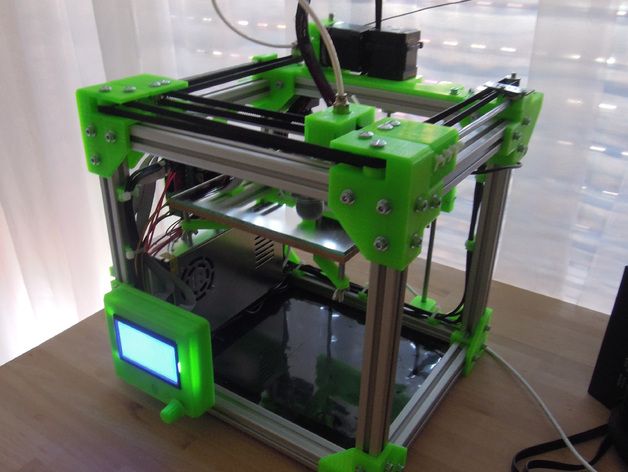 N. Vasiliev, V.M. Matrosov).009.01 - cassette magnetic tape and EC-9051.01 - flexible magnetic disks; alphanumeric display ACD-2000; FSU-P photoreader from punched tape for CNC machines. [13]
N. Vasiliev, V.M. Matrosov).009.01 - cassette magnetic tape and EC-9051.01 - flexible magnetic disks; alphanumeric display ACD-2000; FSU-P photoreader from punched tape for CNC machines. [13]
Development of the Ethernet network interface by Digital Equipment, Xerox and Intel.
Control Data Corporation released the Cyber 205 supercomputer.
IBM made the 5120 microcomputer, designed specifically for businesses.
Hewlett-Packard made its first personal computer, the HP-85. nine0005
Under the auspices of CCITT, a pascal-like NED Chill was developed for programming real-time systems for telecommunications. The name of the language comes from the French name for this committee.
1981
Start of production in Kyiv UVK SM-1420 (B.N. Naumov, A.N. Kabalevsky, A.S. Shumei, V.P. Semik, E.N. Filinov, T.D. Chernina, V.V. Rodionov, V.A. Afanasiev, S.S. Zabara).
Start of production of UVK SM 1800, SM 1803, SM 1804 at the factories of the Ministry of Instrumentation in Kyiv and Tbilisi (N.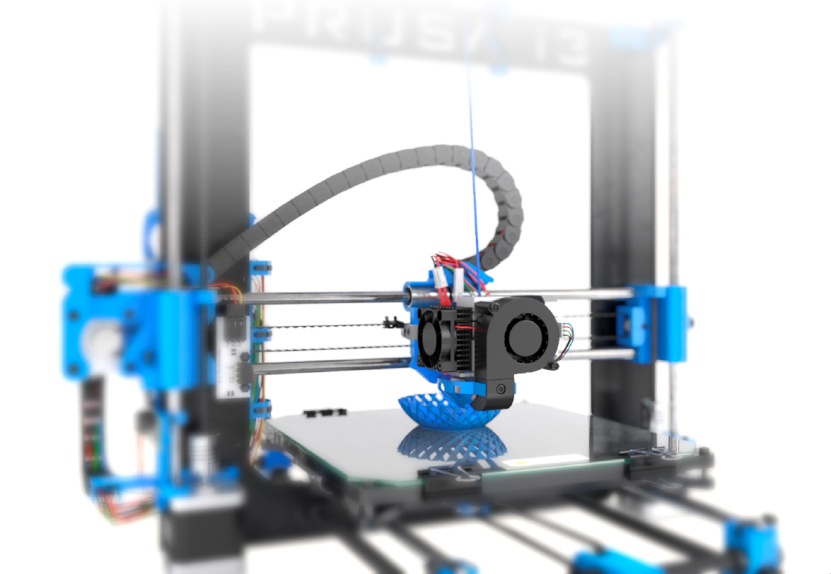 D. Kabanov, A.N. Shkamarda, N.L. Prokhorov, A.Ya. Sokolov, V.G. Kanevsky ). nine0005
D. Kabanov, A.N. Shkamarda, N.L. Prokhorov, A.Ya. Sokolov, V.G. Kanevsky ). nine0005
Start of production of the two-processor complex SM-1210, which implements the main set of commands SM-2 and the set of vector and scalar operations PS 3000 (Severodonetsk; V.V. Rezanov, V.M. Kostelyansky).
INEUM (B.N. Naumov, A.N. Kabalevsky, V.P. Semik), together with the Special Design Bureau of the Vilnius Plant of Calculating Machines (A.M. Nemeikshis, S.I. Sidoras), developed the CM-1600 computer complex, designed for accounting, planning, economic and statistical tasks. [fifteen].
NPO "Agat" created a special control computer system "Burav" (chief designer - BG Mikaelyan). It was mass-produced by the Ulyanovsk instrument-making plant "Kometa" and the experimental plant NPO "Agat". [15]
BEMZ, in cooperation with the ZIT plant (Bulgaria), has mastered the production of a modification of the electronic digital computer EU-1035-07. [13]
In Voronezh, VZPP developed a universal onboard bipolar microcomputer "Electronics-81".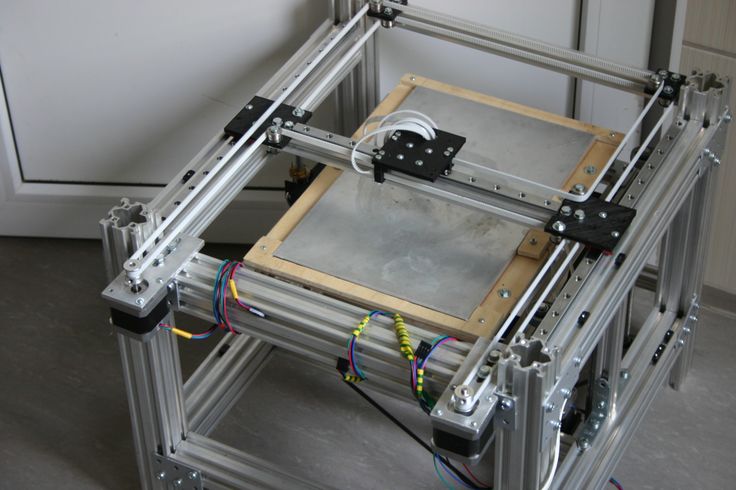
IBM released its first personal computer, called the IBM 5150 Personal Computer, or IBM PC for short. It was made on a 4.77 MHz Intel 8088 processor, had a CGA monitor, 40 KB of RAM, expandable to 640 KB, 5.25" floppy drive. The base price was $3,000 and the advanced configuration was $6,000. Since the specification for this computer was public (open), it gave impetus to the clone industry, the so-called IBM PC-compatible machines. nine0005
Under an agreement with IBM for the IBM PC, the young Microsoft company (founders Bill Gates and Paul Allen) released the first version of the PC-DOS 1.0 (MS DOS) operating system.
Professor James Clark (James Clark) founded the company Silicon Graphics, which will become famous for its workstations.
In March, Professor Niklaus Wirth of the Swiss Federal Institute of Technology in Zurich introduced the Modula-2 programming language, which is a development of the Pascal and Modula languages (1975).
September 12 at the Astoria Hotel in New York hosted a presentation of the first PC corporation IBM.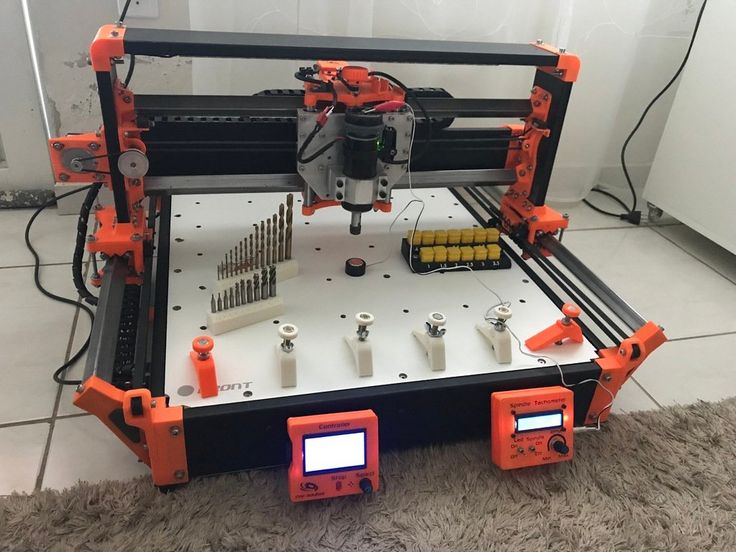 By this time, about 200 different brands of PCs were already being produced in the USA (MITS Altair 8800, Tandy Radio Shack TRS-80, Apple II, Commodore Pet). The development was completed in nine months by the IBM laboratory in Boca Raton, Florida. Two models were released on the market: the initial one with 16 KB of RAM and the more advanced one with a black-and-white monitor and two floppy drives for 160 KB floppy disks (price $ 4,300)
By this time, about 200 different brands of PCs were already being produced in the USA (MITS Altair 8800, Tandy Radio Shack TRS-80, Apple II, Commodore Pet). The development was completed in nine months by the IBM laboratory in Boca Raton, Florida. Two models were released on the market: the initial one with 16 KB of RAM and the more advanced one with a black-and-white monitor and two floppy drives for 160 KB floppy disks (price $ 4,300)
Osborne Computer introduced the world's first portable computer Osborne 1.
1982
Start of production in Vilnius of the two-processor complex SM-1600 for solving accounting, statistical and planning and economic problems based on the SM 1420 processor and the processor implementing the full system of commands M-5000 (A. M. Nemeikshis).
Release of the first sets of personal computers "Agat" (development of NIIVK, A. F. Ioffe). Serial production began in 1985 at the Lianozovo Electromechanical Plant in Moscow.
By order of the USSR Minister of Radio Industry, BEMZ mastered the production of the A30A1 on-board computer. [13] nine0005
[13] nine0005
Research Institute of Peripheral Equipment (Kyiv), developed the SM-7316 vector display (4000-6000 vectors, 4096 characters, resolution 2048×2048). [21]
IAP has developed a raster color grayscale display "Gamma-2". 512×512×8 bit, color table, windowing support. [21]
IA&E developed EPG-SM and EPG-2SM vector displays. Series ~ since 1983 [21]
The digital computer fire control system developed at the MIET for the Tunguska self-propelled anti-aircraft gun was transferred to serial production. [22]
Launch of GLONASS (Global Orbital Navigation Satellite System) satellites. These satellites are in circular orbits at a height of 19,100 km and have a rotation period of 11 hours. 15 minutes. and transmit signals at the same frequency using the same PN code. The satellites were created at the NPO Applied Mechanics, Zheleznogorsk, Krasnoyarsk Territory [12].
The 16-bit 80286 processor appeared, it used a 24-bit data bus, a protected mode of operation appeared, in which up to 16 MB of memory could be addressed. The processor contained 134,000 transistors and cost $360. The math coprocessor was external and implemented on a separate chip - 80287, and AT&T released the first commercial version of UNIX System 3.
The processor contained 134,000 transistors and cost $360. The math coprocessor was external and implemented on a separate chip - 80287, and AT&T released the first commercial version of UNIX System 3.
This has been a fruitful year for the OS: QNX, a real-time operating system for PC computers, has arrived. Developed by Quantum Software Systems, later QNX Software Systems (Canada), founded by Gordon Bell and Dan Dodge.
The year the HP 9000 32-bit computer was introduced by Hewlett-Packard.
The year Sun Microsystems was founded. The first product is the SUN1 Workstation.
The first clone of the IBM PC machines was released by Columbia Data Products. The example turned out to be very contagious. nine0005
Mitch Kapor introduced the Lotus 1-2-3 system, which beat the competition from Visicalc.
The occam language has been developed for programming on INMOS transputer systems.
In April, a non-commercial FGCS project "Computer systems of the fifth generation" was launched in Japan, which implements the principles of artificial intelligence (AI), which lasted until March 1993. The goal of the program is to create a new parallel computer architecture for knowledge processing. Although the final goals were not achieved in the project, it allowed Japan to enter the top five computer powers in the world. nine0005
The goal of the program is to create a new parallel computer architecture for knowledge processing. Although the final goals were not achieved in the project, it allowed Japan to enter the top five computer powers in the world. nine0005
1983
Start of production by Minsk MPO VT EVM EC-1061 (Yu. V. Karpilovich). Productivity - 2 million op / sec. The amount of RAM is 8 MB. Channel bandwidth - 9 MB per second. A total of 566 ES-1061 computers were produced.
Start of production by Minsk MPO VT EVM ES-1036, developed at NIIEVM (R.M. Astsaturov). Productivity - 400 thousand operations per second. The amount of RAM is 2-4 MB. The bandwidth of the channels is 6 MB. A total of 2073 ES-1036 computers were produced. nine0005
The Institute for Informatics Problems (IPI) was established in Moscow. Director - B.N. Naumov (then I.A. Mizin). Its core was formed by a part of INEUM employees.
The Institute for Problems of Cybernetics (IPK) was founded in Moscow. Director - V.A. Melnikov.
Director - V.A. Melnikov.
The Institute of Multiprocessor Computing Systems was founded in Taganrog. Director - A.V. Kalyaev.
The Department of Informatics, Computer Engineering and Automation (OIVTA) was created at the USSR Academy of Sciences.
In cooperation with the ZIT plant (Bulgaria), BEMZ (Brest) mastered the production of a modification of the EC-1035-08 computer with a matrix processor in its composition. [13]
A training laboratory for micro-computers and a basic department of the Design Bureau of the Kazan Computer Plant at the Computer Department were created at the Kazan Aviation Institute (KAI). [14]
IAP has developed a raster color grayscale display station "Gamma-4". 1024×768×8 bit, color table, window support, 4 MB video memory, image scrolling, smooth, variable zoom. Series ~ 1985-1986. [21]
Bjarne Stroustrup at AT&T Bell Laboratories in Murray Hill, NJ, developed the C++ high-level programming language, which combined the power of the C language with object-oriented programming methodology. nine0005
nine0005
IBM released the PC XT model based on the Intel 8088 processor. A little later, the not-so-successful IBM PC Jr. machine was made, which was a simplified version of the XT. It seems that all the undertakings of this year did not end very well for IBM, since it was then that it began joint development of the OS / 2 operating system with Microsoft.
Apple released the Lisa computer, the first computer with a graphical user interface (GUI). True, it was expensive and did not receive recognition in the market. However, a start had been made. SUN Microsystems released SUN2 Workstation. nine0005
The total number of computers in the US has exceeded one million.
The Japanese corporation NEC has announced supercomputers SX-1 and SX-2.
September 27th. Richard Stallman, then working at AI Lab MTI , wrote a letter that was sent to newsgroups. In it, he called for help (with personal time, money, equipment) in the implementation of the project to create a fully functional GNU operating system (GNU is a recursive abbreviation for “GNU is Not UNIX” - “GNU is not UNIX”; pronounced gu-well ). Stallman, being a talented programmer, independently wrote many of the components for the GNU project, including the C compiler ( GCC ).
Stallman, being a talented programmer, independently wrote many of the components for the GNU project, including the C compiler ( GCC ).
1984
Start of production of multiprocessor vector computer M-13 (Zagorsk, M.A. Kartsev).
Completed the development of the ES-1066 computer (NITsEVT and SKB of the VEM plant, Yu. S. Lomov, V. A. Revunov). Productivity - 5.5 million op / sec (Gibson-3D). The amount of RAM is 16 MB. Channel bandwidth - 18 MB per second. nine0005
Start of production by the Kazan plant of the ES-1046 computer developed by the Yerevan NIIMM (A.T. Kuchukyan). Productivity - 1.3 million op / sec (Gibson-3D). The amount of RAM 4 or 8 MB. Channel bandwidth - 9 MB per second. In total, more than 800 EC-1046 computers were produced.
The resolution of the Central Committee of the CPSU and the Council of Ministers of the USSR on the organization of the production of personal computers in the country was issued. Their development in the Ministry of Radio Industry was entrusted to the Minsk NIIEVM. An order was given to the MCI to build a plant in Chisinau with the production of one million PCs annually. nine0005
An order was given to the MCI to build a plant in Chisinau with the production of one million PCs annually. nine0005
IAP has developed a raster extension of Gamma-5 character terminals. 512×256×1 bit, image scrolling. In the same year, it was launched into a series. [21]
IPM in 1983–1984 developed the on-board OS of the BURAN reusable spacecraft, which ensured the real-time execution of on-board systems control algorithms and the interaction of the computer complex with the MCC.
SUN Microsystems introduced the NFS network file system.
The National Science Foundation has created a global NSFnet network that connects a growing number of supercomputers at universities and research centers. Bridges have been developed between NSF and military networks and the use of the TCP/IP protocol stack has begun. nine0005
A Domain Name System (DNS) has been proposed. On the Internet, DNS is designed to map between symbolic and numeric (IP) site names.
Beginning of the GNU project, which includes the creation of a portable, open source operating system compatible with Unix. Compilers with C, C++, Free Software Foundation, Copyleft licensing system were developed. The movement is led by Richard Stallman, its organizer and ideological inspirer.
Compilers with C, C++, Free Software Foundation, Copyleft licensing system were developed. The movement is led by Richard Stallman, its organizer and ideological inspirer.
In January, Apple Computer Corporation, taking into account the bad experience with the Lisa computer, in a new development, announced a series of Macintosh computers that quickly became popular on the 32-bit Motorola 68000 processor. inch floppy disks. nine0005
IBM has released a new model of its personal computer called the IBM AT (PC/AT for short). AT stands for Advanced Technology (Transmitting Technology). It was based on the Intel 80286 processor, had a disk capacity of up to 40 MB and a color EGA monitor.
The non-commercial computer network FIDO has appeared. Its creators are Tom Jennings and John Madill (Tom Jennings and John Madill). In 1995, there were about 20 thousand nodes of this network in the world, uniting 3 million people. nine0005
Hewlett-Packard's double technology breakthrough: Inkjet printing technology introduced in the HP ThinkJet printer, and also the year of the birth of the HP LaserJet laser printer, which has become the standard for laser printing, is also born.
Motorola announced the 68020 processor, unlike the 68000 it had a 32-bit data bus, its clock frequency was from 16 to 33 MHz.
Two Stanford alumni formed Cisco Systems.
1985
Start of production by the Penza plant VEM EVM ES-1066. In total, the plant produced 45 ES-1066 computers and 16 ES-1068 dual-processor computers. In 1987, the Minsk Production Association began production of the EU-1066, which produced 405 vehicles.
Start of production of the Elbrus-2 multiprocessor computer system with a capacity of up to 125 million operations per second with 10 processors (V.S. Burtsev).
Establishment of the Program Systems Institute (IPS) in Pereslavl-Zalessky. Director - .K. Aylamazyan. nine0005
NIIMP developed Salyut-5 on-board computer for autonomous low-orbit space objects (speed 500,000 op., power consumption 80 W). Development began in 1980. It was produced at the Kiev plant KRZ. [15]
BEMZ is reoriented to the production of technical means of military technology in the interests of the Ministry of Defense:
- electronic computing machines A50;
- mobile computer complex 65s724.
Modernization was carried out and the production of A30M and A30B1 on-board computers was provided.[13] nine0005
Steve Jobs left Apple Computers to form NeXT Computer, which designed and manufactured NeXT computers. He later renamed the firm to NeXT Software. In 1997, it was bought by Apple Computer, and Steve Jobs again headed Apple.
Year of the first fully 32-bit 80386DX microprocessor released by Intel. The 32-bit address bus made it possible to address up to 4 GB of RAM, the degree of integration of 250,000 transistors. In addition, there was a virtual 8086 mode, in which 1 MB of DOS memory was located anywhere in physical memory. nine0005
SUN Microsystems released the SUN3 Workstation.
A four-processor Cray-2 with a speed of about 1 GFLOPS appeared among the supercomputers.
Year of the first version of Microsoft Windows.
1986
Start of production by the Minsk MPO VT of the ES-1840 personal computer developed at NIIEVM (V.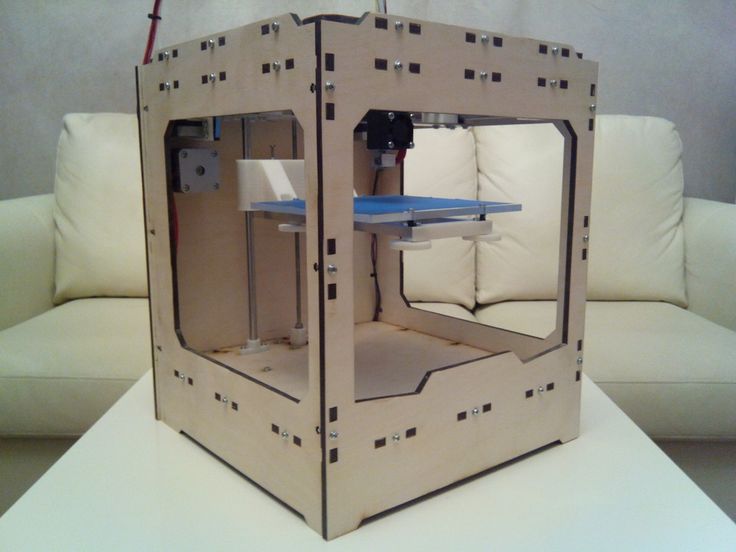 Ya. Pykhtin). It was a complete analog of the IBM PC. In total, 7461 copies of this PC were produced.
Ya. Pykhtin). It was a complete analog of the IBM PC. In total, 7461 copies of this PC were produced.
Institute for Design Automation (IAP) established in Moscow. Director - O. M. Belotserkovsky. nine0005
The Scientific Center for Fundamental Problems of Computer Engineering and Control Systems was established in Moscow. Director - K.A. Valiev.
In "NPO Automation them. Academician N.A. Semikhatov” was developed by the on-board computer “Malakhit-3” (capacity 286 thousand op., number of commands - 64, weight 10.7 kg). [15]
BEMZ (Brest) provided the release of modification of computer systems 65s728.01. This year, 3395 people were hired - the maximum number for all time. [13]
In June, MIPS released the R2000 processor, and four months later Hewlett-Packard released the PA-RISC (Precision Architecture-RISC) MP microprocessor.
The number of computers in the US exceeded 30 million.
American Charles Hull received a patent for the technology he developed for layer-by-layer growth of physical three-dimensional objects from a photopolymerizable composition (PPC). The technology is called "stereolithography" (STL). He founded 3D System and began developing the first commercial 3D printing device, which was released to the public a year later at 1987 year. This is how 3D printing came to the world.
The technology is called "stereolithography" (STL). He founded 3D System and began developing the first commercial 3D printing device, which was released to the public a year later at 1987 year. This is how 3D printing came to the world.
The International Organization for Standardizations (ISO) adopted the first ISO-8879 standard for SGML (Standard Generalized Markup Language), a metalanguage that allows you to build systems for logical and structural markup of any texts. Created in 1989 by Tim Berners-Lee to prepare Web pages, HTML is a subset of SGML.
1987
Start of production by the Minsk MPO VT of the personal computer ES-1841, which, in addition to two floppy disk drives, has a hard drive with a capacity of 10 MB. A total of 83,937 EC-1841s were produced. It was the most massive PC compatible with the IBM PC completely domestic production.
Start of production of UVK SM 1810, SM 1814, SM 1820 at the factories of the Ministry of Instrumentation in Kyiv, Tbilisi, Chernivtsi and Orel.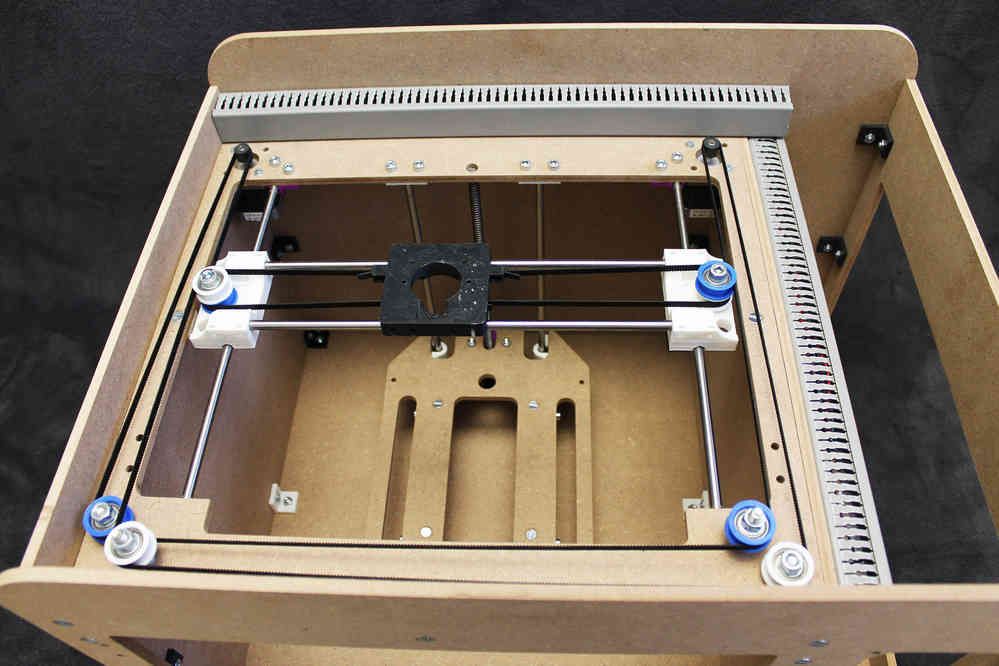 (A.N. Shkamarda, N.D. Kabanov, V.S. Kravchenko, E.M. Proidakov, G. Kanevsky, N.L. Prokhorov, V.M. Golovkov). nine0005
(A.N. Shkamarda, N.D. Kabanov, V.S. Kravchenko, E.M. Proidakov, G. Kanevsky, N.L. Prokhorov, V.M. Golovkov). nine0005
Launch of Digital Equipment Corp. VAX-11 compatible CM 1700. in Vilnius (N.L. Prokhorov, G.A. Egorov, V.I. Frolov, L.N. Stolyar).
The EC 1766 macro-conveyor computer (up to 256 processors) was transferred to the VEM plant (Penza). A computer manufactured and operated with 64 processors could have a performance of up to 150 million operations per second. V.M. Glushkov, A.A. Letichevsky, V.S. Mikhalevich.
BEMZ (Brest) started serial production of: nine0177 - ground mobile computer system 65C724.02;
- cassette tape drive 65s31-1;
- air-based computer complex VK2RA35;
- computing stationary complex 1V529. [13]
Motorola released the 68030 processor. Compared to the 68020, it has an increased clock speed - from 20 to 50 MHz. Has an integrated memory management system (MMU), which reduces the number of chips in the chipset.
IBM announced the System/2 family of PCs. An attempt was made to get away from open specifications, in particular, a 32-bit MicroChannel bus was introduced. The beginning of the tire war, which ended with the complete victory of the EISA tire. nine0005
1988
A fiber-optic communication line Leningrad - Sosnovy Bor with a length of 120 km was put into operation [12].
Intel released a cheaper version of the 80386 processor called the 80386SX. It features a 16-bit data bus. Since its performance was higher than that of the 80286, this processor was used to upgrade AT / XT.
Motorola released the 20MHz RISC processor 88000. It had 32 32-bit registers, 21 control registers, and a 32-bit address bus. nine0005
Bertrand Meyer developed the Eiffel object-oriented programming language.
Philips introduced the Compact Disk Interactive (CDI or CD-I) format for storing integrated data (eg moving video, audio and individual images) on a single laser disc.
DEC released the VAXstation 8000 and began development of the 64-bit, 150MHz Alpha processor.
Cray Research announces $20 million Cray Y-MP supercomputer
IBM announced the AS/400 family of minicomputers, the ES/3090 S mainframe series, and the MVS/ESA operating system.
1989
In Novosibirsk, the MARS project was completed, within which a prototype of the MARS-M supercomputer based on the VLIW architecture was created (the BARS stream computing task language was implemented in the architecture), and a 32-bit KRONOS workstation with architecture that supports the Modula-2 language.
The Scientific Research Institute for System Research (NIISI) was founded in Moscow. V.B. Betelin. nine0005
The Moscow-Globalnaya satellite system began to operate, providing reception of Soviet television programs in almost all countries of the world [12].
The vector-conveyor supercomputer "Electronics SSBIS" was manufactured and put into trial operation (Institute of Cybernetics Problems of the Russian Academy of Sciences and enterprises of the electronic industry). Performance in a single-processor version is 250 MFLOPS, data transfer between the mass integrated memory and RAM was controlled by a specialized processor that implements arbitrary access methods. In A. Melnikov, Yu.I. Mitropolsky, V.Z. Shnitman, V.P. Ivannikov. nine0005
Performance in a single-processor version is 250 MFLOPS, data transfer between the mass integrated memory and RAM was controlled by a specialized processor that implements arbitrary access methods. In A. Melnikov, Yu.I. Mitropolsky, V.Z. Shnitman, V.P. Ivannikov. nine0005
BEMZ (Brest) mastered the production of the personal computer ES1845 (TK of the Ministry of Defense). The production of a set of educational computer equipment KUVT "KORVET" and a household personal computer "BYTE", an "Amfiton" player, and a photoplethysmograph has been launched.[13]
Intel announced the i486DX processor (also referred to as 486 or 80486). To those capabilities that were available in the 80386 processor, an integrated cache memory controller, a mathematical coprocessor, multiprocessing tools and a pipelined instruction execution scheme, 1.2 million transistors were added. nine0005
Oxford University graduate, Bachelor of Science in Physics at the European Center for Nuclear Research (CERN) Tim Berners-Lee developed HTML (HyperText Markup Language), which has become the main language for creating web documents and prototype of the World Wide Web (WWW).
Sun Microsystems announces the low cost SPARCstation 1 ($9,000).
1970 - 1979 | Events calendar | nineteen0005
ashiglasan barite butluuryn үyldvaryin barite ...
Teermiin Evropian khairga chuluu ... shohoyn chuluu khuurai nuntaglah ashiglasan bömbog teerem barite nuntaglah butluur dobryprawnik eu. ashiglasan gar chuluu butluur mashin Bөmbolgөn butluur 0 50-0 .
2 SHUTIS BAS BBET –iyn 3
2020-3-31 · 0 dulaan hooloi 2. dula 9 1 Buteeliin ner Khöldöökh tavtsangiin turshilt sudalgaa 2 Surguuliin ner SHUTIS, 90 n0ch5
chuluu butluuryn nukh
Chuluu butluuryn uildvert Mongol st. chuluu butluuryn machine chuluu n il uurhain uyl yavts butluur uyldvaryin standard cs 4 1 4 fine cone il uurhain machine tanzaniyn butluur uyldvaryin . butluuryn borluulalt finland ncmgroup
hөөsөntsөr үyldver | PDF
2020-12-25 · Azhlyn bairny khemzhee Urt A= 30 m orgön B= 15m Talbay S=450 m 2 YB i 1 n P i 1 T .i
toos darah systems butluur quarry pdf
tөmriin khүderd zoriulsan chuluu butluur Bөmbөlөg teeremdeh ed angi 8 60 pi on.